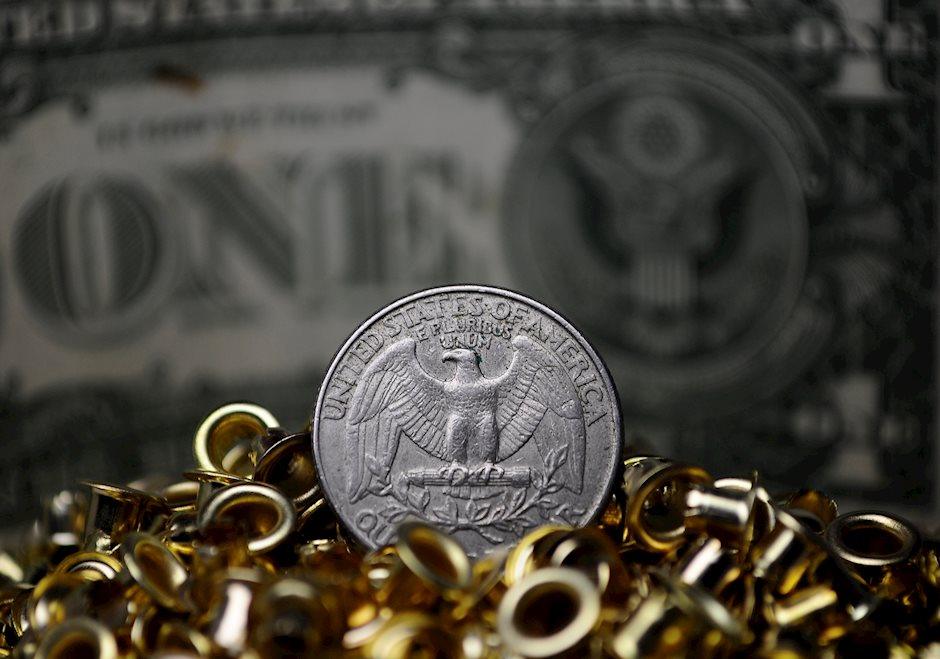Created
: 2024.12.12














![]() 2024.12.12 21:31
2024.12.12 21:31
The US Dollar (USD) softens slightly on Thursday, with the DXY US Dollar Index trading around 106.50, ahead of the last European Central Bank (ECB) meeting for 2024. All eyes will be on President Christine Lagarde as traders will want to see how the ECB will address the recent downturn in economic activity in the Eurozone. Although a 25 basis points interest-rate cut looks to be a near certainty, estimates for a 50 basis point rate cut and even no rate cut at all are on the table as well.
In the US, the economic calendar is rather light. The weekly Jobless Claims will probably soak up the latter part of the attention, whereas the Producer Price Index (PPI) report is not expected to create much waves. The most inflationary elements were already analyzed on Wednesday with the Consumer Price Index (CPI) report, and traders quickly positioned themselves to lock in a rate cut from the Fed next week. According to the CME FedWatch Tool, the chances of such a decision are currently at almost 99%.
The US Dollar Index (DXY) is further defining a bandwidth that could hold until next year given the limited amount of data points left. The US Consumer Price Index (CPI) release did not really move the needle, with the DXY staying between 105.50 and 107.00.
The US Dollar bulls failed on Wednesday to close above 106.52 (April 16 high), a level that on previous occasions has also been a hard barrier to get through.. Next up is the 107.00 round level and 107.35 (October 3, 2023, high). Further up, the high of November 22 at 108.7 emerges.
Looking down, the pivotal level at 105.53 (April 11 high) comes into play before heading into the 104-region. Should the DXY fall all the way towards 104.00, the 200-day Simple Moving Average at 104.14 should catch any falling knife formation.
US Dollar Index: Daily Chart
The European Central Bank (ECB) in Frankfurt, Germany, is the reserve bank for the Eurozone. The ECB sets interest rates and manages monetary policy for the region. The ECB primary mandate is to maintain price stability, which means keeping inflation at around 2%. Its primary tool for achieving this is by raising or lowering interest rates. Relatively high interest rates will usually result in a stronger Euro and vice versa. The ECB Governing Council makes monetary policy decisions at meetings held eight times a year. Decisions are made by heads of the Eurozone national banks and six permanent members, including the President of the ECB, Christine Lagarde.
In extreme situations, the European Central Bank can enact a policy tool called Quantitative Easing. QE is the process by which the ECB prints Euros and uses them to buy assets - usually government or corporate bonds - from banks and other financial institutions. QE usually results in a weaker Euro. QE is a last resort when simply lowering interest rates is unlikely to achieve the objective of price stability. The ECB used it during the Great Financial Crisis in 2009-11, in 2015 when inflation remained stubbornly low, as well as during the covid pandemic.
Quantitative tightening (QT) is the reverse of QE. It is undertaken after QE when an economic recovery is underway and inflation starts rising. Whilst in QE the European Central Bank (ECB) purchases government and corporate bonds from financial institutions to provide them with liquidity, in QT the ECB stops buying more bonds, and stops reinvesting the principal maturing on the bonds it already holds. It is usually positive (or bullish) for the Euro.
![]()
Created
: 2024.12.12
![]()
Last updated
: 2024.12.12

FXStreet is a forex information website, delivering market analysis and news articles 24/7.
It features a number of articles contributed by well-known analysts, in addition to the ones by its editorial team.
Founded in 2000 by Francesc Riverola, a Spanish economist, it has grown to become a world-renowned information website.
We hope you find this article useful. Any comments or suggestions will be greatly appreciated.
We are also looking for writers with extensive experience in forex and crypto to join us.
please contact us at [email protected].
Disclaimer:
All information and content provided on this website is provided for informational purposes only and is not intended to solicit any investment. Although all efforts are made in order to ensure that the information is correct, no guarantee is provided for the accuracy of any content on this website. Any decision made shall be the responsibility of the investor and Myforex does not take any responsibility whatsoever regarding the use of any information provided herein.
The content provided on this website belongs to Myforex and, where stated, the relevant licensors. All rights are reserved by Myforex and the relevant licensors, and no content of this website, whether in full or in part, shall be copied or displayed elsewhere without the explicit written permission of the relevant copyright holder. If you wish to use any part of the content provided on this website, please ensure that you contact Myforex.
Myforex uses cookies to improve the convenience and functionality of this website. This website may include cookies not only by us but also by third parties (advertisers, log analysts, etc.) for the purpose of tracking the activities of users. Cookie policy